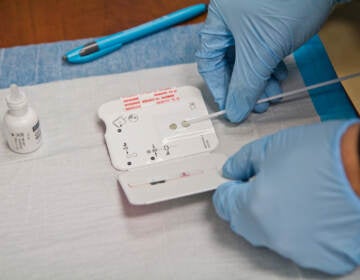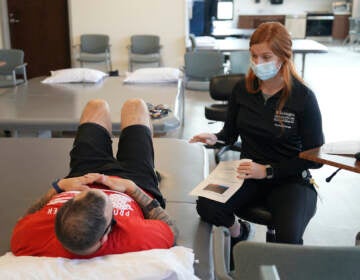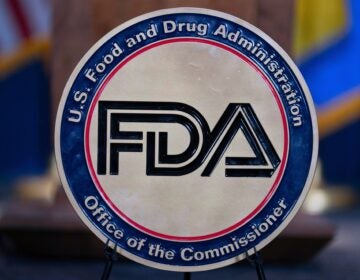Food insufficiency rates jump among SNAP recipients after expanded pandemic benefits end, Penn study finds
People and families who rely on food stamps experienced a 21% increase in food insufficiency when pandemic-era benefits ended.

File photo: Jaqueline Benitez, who depends on SNAP benefits to help pay for food, shops for groceries at a supermarket. (AP Photo/Allison Dinner)
People who get financial help to buy food and groceries through the federal Supplemental Nutrition Assistance Program saw an increase in their monthly benefit amounts during the COVID-19 pandemic.
But after the emergency allotments stopped following the end of state and national public health emergencies earlier this year, an estimated 2 million more Americans faced food insufficiency, according to a new study by researchers at the Perelman School of Medicine at the University of Pennsylvania.
“Our research shows that increasing the benefit size can be very powerful,” Dr. Aaron Richterman said.
But once benefits were reduced, Richterman said about one out of every 20 SNAP households experienced food insecurity.
Food insecurity is defined as a lack of access to enough nutritious food. In Philadelphia alone, about 14% of people struggle to buy or afford healthy produce and groceries, according to Feeding America.
“It can involve hunger at times, but it’s really that unstable access to food that’s of adequate quality or quantity,” Richterman, instructor of medicine at the Division of Infectious Diseases at Penn Medicine, said.
Food insufficiency is a more extreme category of food insecurity, where individuals and families may not have enough food to eat at all.
The Penn study, published in JAMA Health Forum, looked at data from 3 million survey participants across the U.S. and people who rely on food stamps.
Richterman said the return of higher food insecurity and insufficiency rates are concerning given that they can lead to poor health outcomes, especially when chronic illness may take a backseat to more immediate needs like hunger and daily meals.
“People who are facing and struggling with food insecurity may be less likely to take their medications,” he said. “They may be less likely to pay attention to certain symptoms that they’re having that could be important and consequential. They may be less likely to attend their doctor’s appointments and things like that.”
Richterman and his colleagues said the study provides additional evidence that higher SNAP benefit amounts can help keep more people healthy in the long term, whereas slashed benefits will cause people to struggle.
Individual states have passed local laws to expand SNAP benefits or eligibility following the end of the COVID-19 public health emergency in March.
New Jersey raised the minimum SNAP benefit amount to $95 a month per household. Many families are eligible for more, depending on their income. The state passed another law this month that guarantees SNAP benefits for at least one year before people must reapply for eligibility.
In Pennsylvania, certain college students may now be eligible for monthly SNAP benefits if they’re enrolled in qualifying employment and training programs.
“I encourage higher education institutions across the Commonwealth to review the criteria for this new flexibility and apply for program certification as soon as possible so we can help students who may be struggling with schooling and personal costs,” said Dr. Val Arkoosh, secretary of the state Department of Human Services, in a statement.
Congress will debate and set the next five years of federal rules and qualifications of SNAP in the 2023 farm bill. The previous farm bill of 2018 is set to expire on Sept. 30.
WHYY is your source for fact-based, in-depth journalism and information. As a nonprofit organization, we rely on financial support from readers like you. Please give today.






